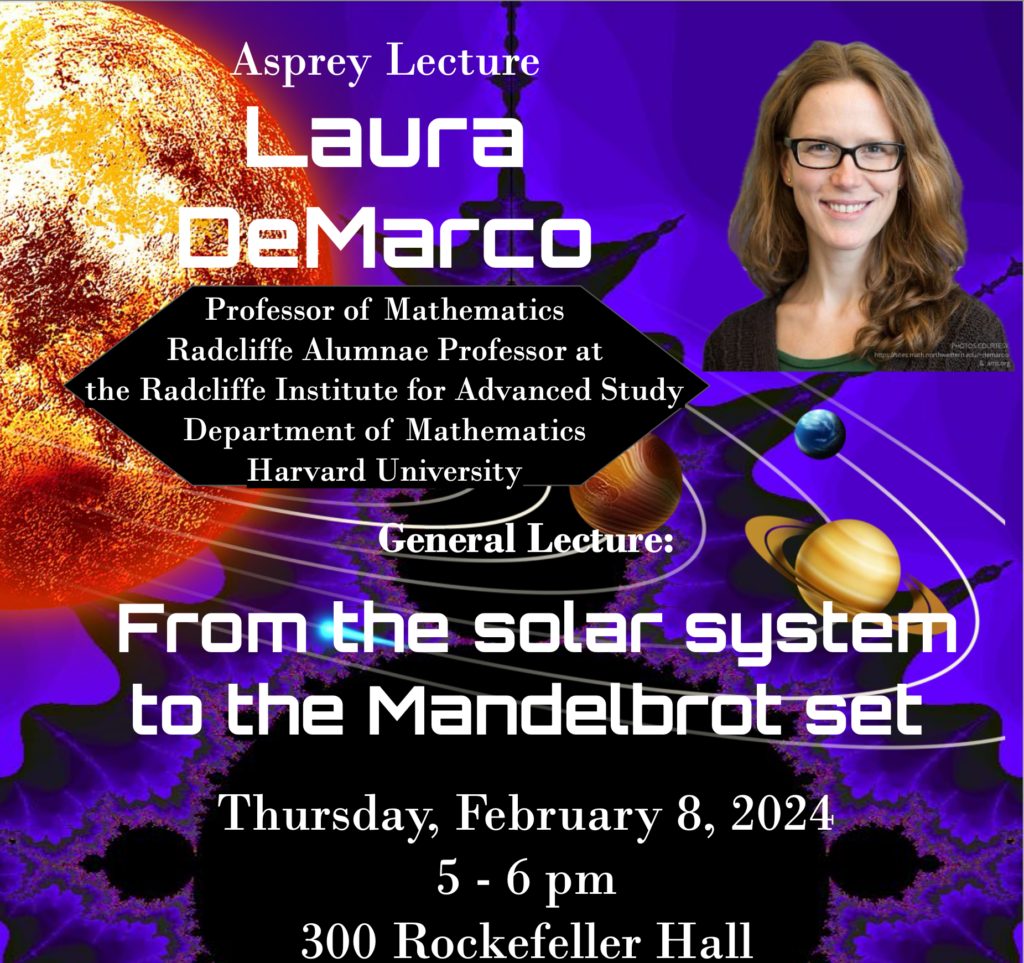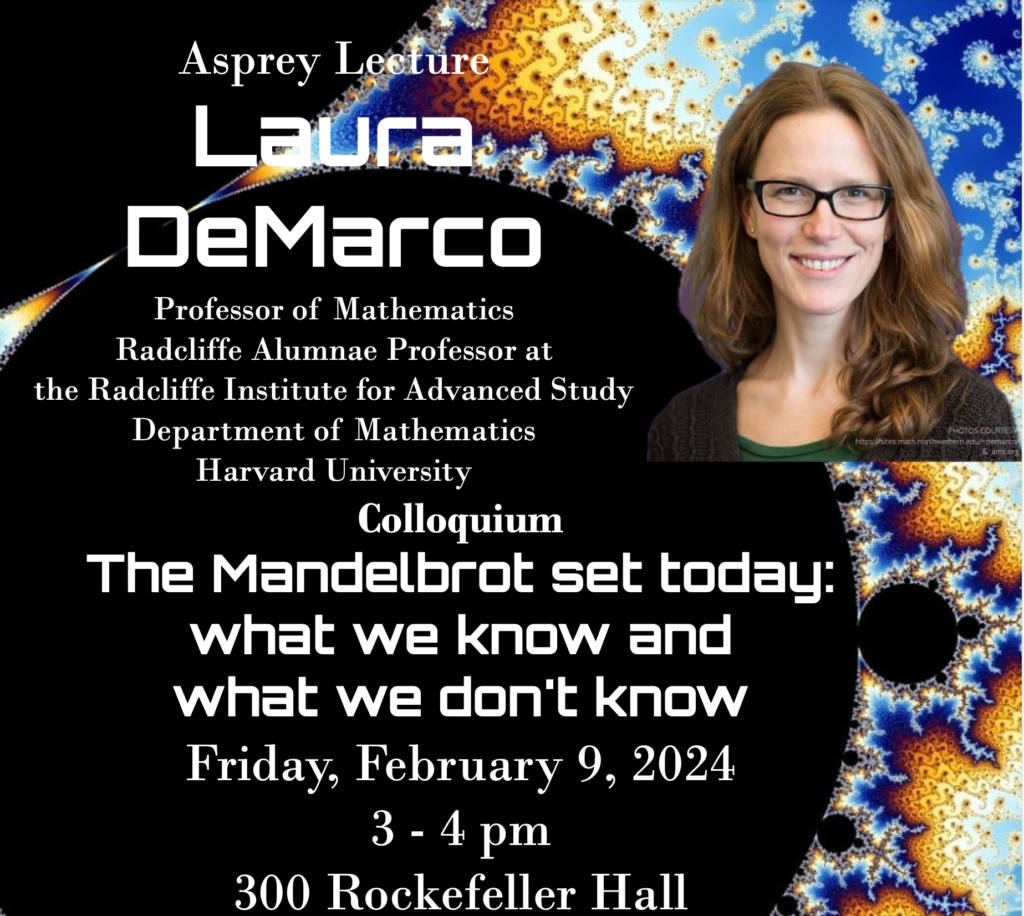The Asprey Lecture Series is an annual series of lectures featuring the country’s most prominent mathematicians. The lecture series is in honor of Winifred Asprey, a Vassar graduate who taught mathematics and computer science at Vassar for 38 years before her retirement in 1982. Professor Asprey was one of the most admired members of the Vassar faculty and was nationally recognized as a spokesperson for mathematics and computer science. She founded Vassar’s Computer Center in the mid-60’s—one of the first such at a liberal arts college. She continued to live in the Poughkeepsie area until her death in 2007.
2023-24 Asprey Lectures
Professor Laura DeMarco from Harvard University will deliver the 2023-24 Asprey Lectures February 8-9, 2024.

Abstract: The field of dynamical systems has a long and fascinating history: it originated with the study of planetary motion and has become a central part of mathematics today, with many connections to algebra, geometry, and analysis. In this talk, I will present some of its historical development, with emphasis on the subtle question of linearization and how that leads to deep and difficult problems that remain unsolved today.

Abstract: One of the most famous–and still not fully understood–objects in mathematics is the Mandelbrot set. By definition, it is the set of complex numbers c for which the recursive sequence {c, c^2+c, (c^2+c)^2+c, …}, defined by x_1 = c and x_{n+1} = (x_n)^2+c, is bounded. But this set turns out to be rich and complicated and related to many different areas of mathematics. I will present an overview of what’s known and what’s not known about the Mandelbrot set, and I’ll describe recent work that (perhaps surprisingly) employs tools from arithmetic geometry to study these systems. The new work is a collaboration with Myrto Mavraki.
Past Asprey Lectures
- 1991–92: Stephen Smale, Chaos and the Godel Incompleteness Theorem
- 1992–93: William P. Thurston, An Introduction to the Geometry and Topology of Three-dimensional Manifolds
- 1993–94: Kenneth Ribet, Fermat’s Last Theorem
- 1994–95: John H. Conway, Shapes and Symmetries
- 1995–96: Joan Birman, Knots, Differential Equations, and Chaos
- 1996–97: Angus MacIntyre, What Can Logic Tell Us About the Real Exponential Function?
- 1997–98: Charles Fefferman, Atoms, Numbers, and Stars
- 1999–2000: Sir Michael Atiyah, Atoms, Knots, and Elementary Particles
- 2000–01: Vaughan Jones, Noncommutative Geometry for Dummies
- 2002–03: Peter Neumann, The Memoirs of Évariste Galois
- 2003–04: Hendrik Lenstra, Escher and the Droste Effect
- 2004–05: Jeff Weeks, The Shape of Space
- 2005–06: Ken Ono, Number Theory: Partitions and the Legacy of Dyson and Ramanujan
- 2006–07: Jon Kleinberg, Modeling the Web, Mining my E-mail, and Other Perspectives on the Information Revolution
- 2007–08: Avi Wigderson, A world view through the computational lens
- 2008–09: Margaret Wright, The Remarkable Saga of Linear Programming: the Problem, the Methods, the Continuing Mysteries
- 2009–10: Günter Ziegler, Proofs for THE BOOK
- 2010-2011: Trachette Jackson, Mathematical Biology: An Essential Part of 21st Century Science (postponed to Fall 2011)
- 2012-13: Martin Nowak, Evolution of Cooperation
- 2013-14: Leila Schneps, Mathematics in the Courtroom: Uncharted Territory
- 2014-15: Erik Demaine
- 2015-16: Don Saari, We vote, but do we elect whom we really should?
- 2016-17: W. Hugh Woodin, A short story of large infinities and small sets
- 2017-18: Maria Chudnovsky, Parties, doughnuts and coloring; some problems in graph theory
- 2018-19: Andrea Bertozzi, Mathematics of Crime (delayed to Fall 2019)
